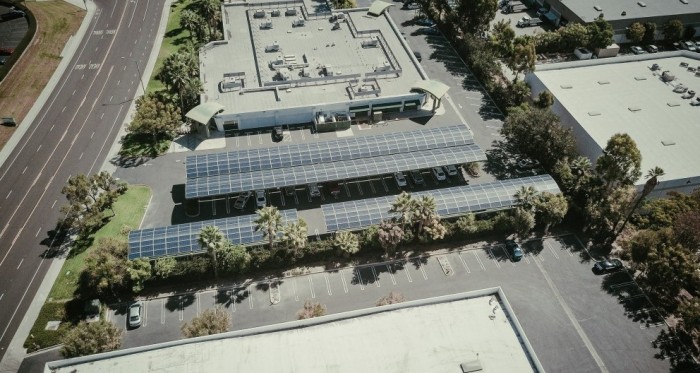In recent years, the role of the university campus has evolved.
While it remains principally a place of learning, campuses are today also a central hub for socialising, living and research. Beyond the student body alone, these sites can accommodate thousands of support staff and workers, alongside external visitors using on-site facilities. Specialist universities may also derive additional income from hosting research and development, secured via a bidding process.
So, put simply, the modern-day university campus has to be a lot of things to a lot of people. But are they set up for that? In most cases, campuses have been optimised for the student experience – their principal function and source of revenue – with the remainder of the university ecosystem left uncatered for.
Space is typically at a premium on site and digital infrastructure is seldom suitable for the myriad functions required on a day-to-day basis. These issues are, in many ways, to be expected. By their nature, campuses are inefficient, with buildings sprawled across rural areas. This is in direct contrast to cities, for example, which tend to build upwards rather than outwards to better maximise space.
On-site geography can be a challenge to navigate too, not least for students and visitors, but for the interconnectivity with staff such as professional services.
Smart strategy
The idea behind Smart Campuses is to leverage digital technology to optimise the on-site experience for all its patrons.
Creating a more seamless digital environment allows a campus to cater to its residents on a more efficient and scalable basis. For example, university grounds are typically populated with an array of large buildings, each with different functions and a revolving door of users. To manage this effectively, reliable internet connectivity is crucial and can alleviate the administrative burden on staff and students alike.
In many ways, the challenges of the post-Covid university present as a Venn diagram:
On one side, there are problems that require solutions. These can include structural issues such as site layouts, limited connectivity and space, the latter of which remains a quandary to many universities as they continue emerging from the pandemic.
On the other side are the more aspirational aspects of the site. Social connection, student experience and, where possible, additional revenue in the form of R&D.
We see Smart Campuses as the intersection of these two segments – using digital technology to mitigate existing issues while facilitating a university’s ambitions via augmented infrastructure.
Sustainability
Smart Campuses can also help address a site’s environmental impact.
Sustainability has transitioned from buzzword to legislation, with many jurisdictions mandating energy targets for offices, residential buildings and indeed, universities. Failure to meet these requirements can result in financial consequences as well as increased scrutiny from local councils and, potentially, reputational damage.
Far from being purely altruistic, campus sustainability is also a financial consideration as worldwide energy prices have skyrocketed over the past few months and show no signs of dropping in the short to mid-term.
Universities must also consider how they are perceived by their ‘customers’ – namely students, many of which are Gen Z and deeply concerned about matters relating to climate.
Universities are, of course, a business and must be mindful of how outdated energy technologies and policies may affect their bottom line.
Smart Campuses offer these institutions the optionality of greener energy and, perhaps more pertinently, the means of which to record and share those credentials.
There is a spectrum to be considered, from simply minimising a site’s environmental impact to actually generating its own energy via on-site technology. Both of which are valid and leave a university better situated for the current climate (consumer and legislative).
A commitment to such practices will reflect well on adopters, particularly in the eyes of prospective students who are more likely to be attracted to a university that mirrors their values.
Process over outcome
At Monstarlab, we support businesses and institutions in upscaling their digital infrastructure and creating Smart Places that work for everyone.
Clearly, each university campus is different. Some are rural and situated in historic buildings, while others are more modern and situated near towns and cities. The quantum of staff, buildings and faculties will vary, and so too will each site’s underlying requirements.
What we’re saying is that no two campuses are the same.
So, when we are approached to work on a site, we take this into account and conduct extensive due diligence on both the purpose and needs of each project. We call this our Discovery Process.
By working backwards, and understanding the ecology of each campus, we are better able to address its needs first time, installing technology and processes that are specific to the user and that, crucially, will be used time and again.
We understand the temptation to reverse this process and dive in ‘tech first’, as typically a client will have identified a specific issue they would like resolved. However, in our experience, this approach can leave blind spots and lead to limited uptake from stakeholders.
We view technology as an enabler, but for it to be fit for purpose, we need to understand exactly what we are looking to enable. By following our Discovery Process, we can better understand the landscape of the project, the relationship between the site and its users and ultimately, provide bespoke solutions that will have meaningful and lasting impacts.
In doing this, we can better align the goals of the campus, its constituents, and their wider area, to pull in a singular direction.
Learn more about Smart Campuses
For more information on Smart Campuses, join Monstarlab’s Engagement Manager Charlie MacDowall as she discusses these issues and more on the PlaceOS podcast with Jon McFarlane and Sabrina Venish –listen to the full podcast episode here.
To learn more about our expertise in developing Smart Places then download our Case Study kit here or visit our web landing page.
Monstarlab are partners with PlaceOS who offer a scalable, smart workplace solution that enables businesses to have a customisable front end and the flexibility to integrate with existing digital infrastructure.






